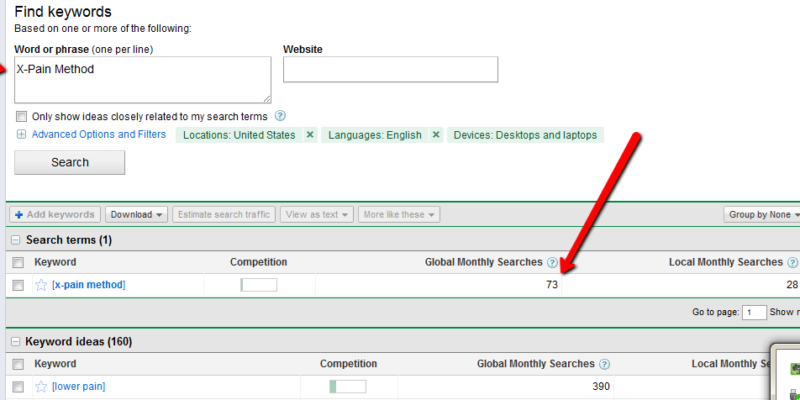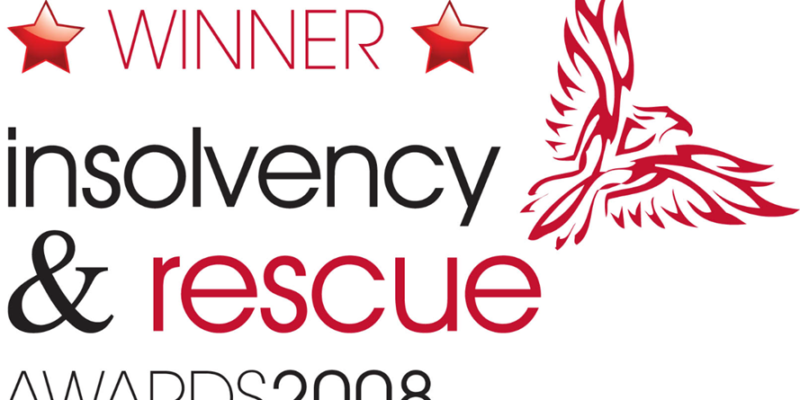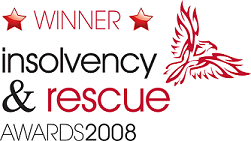What would your future-you have to say to you?
The no-pants guide to spending, saving, and thriving in the real world.
What would your future-you have to say to you?
When I was in high school and working 15 to 20 hours a week, my mom gave me free rein to use the money I earned as I would like. Actually, she said nothing to me about saving for college or putting some money into savings.
When I had friends who complained that they had to put away some of their earnings, I commiserated with them. How unfair of their parents to make them save some of their money! They worked hard for their money, often at crappy part-time jobs. They deserved to spend the money any way they saw fit.
The way I saw it, why save for college? According to financial aid rules, if the student has any savings, she would have to use the majority of it to pay for college. How unfair. To add insult to injury, if prospective college students have some savings, they would qualify for less financial aid, which often meant fewer student loans.
The injustice.
Yes, it was better to spend my hard earned money than save it and be penalized.
No one told me differently. In fact, many people in my family agreed with me and encouraged me to buy a used car to get to and from my job. Of course, I paid the loan payments for the car, the gas I used and my insurance out of money from my job. That was a responsible use of money, but I also went out to eat with friends, a lot. At 16, I was going out to eat with my friends twice a week at least.
However, my plan worked perfectly. When I went to college, I didn’t have to use any of my hard earned cash. No, not me, because I hadn’t saved anything. Instead, I left college with nearly $20,000 in student loan debt. I took two years off and paid down as much student loan debt as I could, getting it down to about $8,000, but then I went to graduate school and took on more student loan debt. I graduated with nearly $25,000 in debt total. I am still paying on it today, 13 years later.
Now that I am the parent, I am one of those “awful” parents who makes her kids save. My son knows when he gets his allowance, some goes to save, some goes to donate, and some goes to spend. True, it makes me cringe when he uses his spend money on little trinkets like temporary tattoos, stickers, and gum, but I keep silent. He did the work to earn the money, and he can spend it as he likes. However, I am inflexible with saving; that money must be set aside. When he goes to college, I expect that he will have to use the majority of that money. Rather than seeing it as a waste, I see it as an important component of his financial education. Spending his money to pay a portion of his college education will hopefully make him take college more seriously.
Meanwhile, I have already begun having chats with him about money, spending, and budgeting. He watches his dad and I work hard to pay down our debt with gazelle intensity. He sees me use a calculator at the grocery store to see how much our groceries will be.
Ultimately, he will make his own financial decisions as he grows up, but I plan to teach him throughout these important years so that even if he turns into a spendthrift, he will have a firm financial understanding to revert to as he ages. While my mom taught me how to stretch money further, she never taught me how to save; I hope saving is a lesson my son takes with him throughout his adulthood.
How do you teach your kids about money management?
Melissa writes at Fiscal Phoenix where she encourages people to rise from the ashes of their financial mistakes as she and her husband are doing.

In this installment of the Make Extra Money series, I’m going to show you how I do keyword research.
Properly done–unless you get lucky–this is the single most time-consuming part of making a niche site. If you aren’t targeting search terms that people use, you are wasting your time. If you are targeting terms that everybody else is targeting, it will take forever to get to the top of the search results.
Spend the extra time now to do proper keyword research. It will save you a ton of time and hassle later. This is time well-spent.
If you remember from the last installment, when we researched products to promote, we narrowed our choices down to a few products.
What I’ve done is create a spreadsheet to score the products. You can see the spreadsheet here. I’ll explain the columns as we populate them.
The first column contains the name of the product. Easy. We’ve got 10 products. I’m going to walk through scoring 1 product, then, through the magic of the internet, I’ll populate the rest, and you’ll get to see the results instantly. Wow.
The second column is the global search volume for the exact search term. I base my product niche sites primarily on the demand for a given product. Everything else is a secondary consideration.
To find the demand for a product, go to the Google Adwords Keyword Tool. In the “word or phrase” box, enter your product name, exactly. In this case, it’s “X-Pain Method”. When the search results come up, change the match type to “Exact”. You should have something like this:

Enter the global search volume in column 2. In this case, it’s 73. Keep this window open, because we’ll be coming back to it.
Column 3 is the search competition. Go to google and enter your product name, in quotes. In this case, “X-Pain Method”. Put the total number of search results in column 3: 223000.

Column 4 is the search competition, but only what appears in a page’s title. Your search query is intitle:”X-Pain Method”, which yields 4400 results.
The next column is for the average PageRank of the first page of search results. For this, I use Traffic Travis. I use the 4th edition, which is paid software, but you can get the free version of version 3, instead. I’ll use version 3 for this example. Open the software and click on “SEO Analysis” on the bottom left of the screen. Put your search term (“X-Pain Method”) in the “phrase to analyze” and set the “Analyze Top” to 10, then hit “Analyze”. When it’s done running, just add up all of the PRs and divide by 10. Ignore Travis’s difficulty rating.
Now, for the rest of the columns, we’re going to look at the keyword tool again. We’re going to pick 3 alternate search terms. Here are the criteria:
Once we pick the keywords, we’ll throw them into google to get the competition, just like we did to populate column 2.
“Exercises for back pain” has medium competition and 1900 monthly searches. It also has an estimated cost-per-click of $3.02, which means people are paying for this.
“Lower back pain exercises” has 6600 searches and medium competition. It’s actually on the lower end of medium, so it looks really promising.
“Lower back” has 4400 searches and low competition, with a CPC of $6.24. This should be a good one. Scratch that. It has 40 million search results, but only 4400 searches. That’s a lot of competition for a small market.
Instead, I’m going to search for “cure back pain” in the keyword tool and see what I get. “Upper back pain” is better. Low competition, 18000 searches each month, and only 2000000 competing search results. Now, I’ll score it.
You really want at least 500 searches per month for the product name. More than 2500 is better. I’m going to assign 1 point per 500 monthly searches.
You also want a lower number of search results. Less than 10,000 is ideal. Less than 100,000 is still decent. More than 250,000, I’d walk. So, under 10,000 gets 5 points. Under 50,001 gets 4. Under 100,001 gets 3. Under 200,001 gets 2. Under 250,001 gets 1. Any higher gets 0.
The ideal intitle search will have less than 2000 results. More than 100,000 is too time-consuming to deal with. 0-2000: 5 points; 2001-10,000: 4 points; 10001-25000: 3 points; 25001-50000: 2 points; 50001 to 100000: 1 point.
The perfect product will have the first page of search result all with a PageRank of 0. That’s a 5 point product. I’ll knock off half a point for every point of average PR.
The related terms are more relaxed. They are what’s known as “Latent Semantic Indexing” (LSI) terms. We will be creating articles to match those search terms, mostly to make our niche site look as natural and real as possible. Any actual traffic those pages drive is just gravy. Points for the related searches start at 10 and get 1 point knocked off for each 3 million results. We’ll be treating the 3 terms as one for this score.
That gives us a perfect score of about 25. There’s no actual upper limit, since the score for the search volume has no upper limit. X-Pain Method scored 18.22.
Now, excuse me a moment while I score the rest.
I’m back. Did you miss me?
I’ve finished scoring each of the products and sorted the results by score. The clear winner is the back pain product, but the lack of searches bothers me. The wedding guide looks much nicer, especially if I target the phrase “wedding planning guide” during the SEO phase of the project. That change alone brings the score almost to first place.
Frankly, I’d take either 2nd or 3rd place over the back pain product. The bare numbers don’t support it, but my judgement tells me they are better products to promote.
There is one final step before deciding on the product. I have to buy it. I can’t review the product without seeing it and I can’t promote it without approving of it.
That’s the secret to ethical niche marketing, you know. Only promote good products that you’ve personally read, watched, or used.
First, my disclaimer: I’m not destitute.
However, I’m trying to spend Christmas acting like I am a pauper.
Why, with small children and beautiful-and-more-than-deserving wife, would I want to deprive my family of a bountiful holiday?
Before we get into the reasons for being a horrible grinch bent on depriving my children of their god-given right to rampant consumerism, let’s look at the Philosophy of Destitution.
The primary reason to pull back and tone it down is basic frugality. Excessive anything is not frugal. I am training my children–and for that matter, my wife and my self–in the finer arts of personal responsibility and frugality. Accumulating debt for a fleeting holiday is insane. If we can’t afford to buy it, we certainly can’t afford to give it. Anything else would be setting a bad example and children learn best by example.
Another piece of the Philosophy of Destitution(when I read this word, I hear a deep, booming voice in my head, like a 30s radio superhero voiceover) is “green”. I consider myself a conservationalist rather than an environmentalist, so don’t read too much into that color. I try to be responsible, instead of destructive and I try to avoid being wasteful. Toys that won’t be played with are wasteful. A garbage can full of packaging for those same toys costs money. It is much cheaper to avoid the landfill here.
Back to “Why”. Why would I be willing to deprive my family?

Everyone needs an emergency fund. More than that, you will eventually need retirement savings, a new car, a big-screen TV, or maybe just a new kidney. Whatever the reason, one day, have a comfortable savings account will make your life easier.
But, Jason, you say, it’s hard to save money! How can I start saving when I can’t make ends meet? I’ve got rent, 9 kids, and a DVD addiction that won’t quit. My mortgage is underwater, my Mercedes still has 8 years on the loan, and the Shoe-of-the-Month Club only carries Christian Louboutin’s. What can I do?
Well, I’ll reply, since I am Jason and you asked for me by name, you need to find a way to make it happen. I’d never recommend someone give up their diamond-studded kicks, but something’s gotta give. In the meantime, there are some ways you can save money without feeling the sting of delayed gratification.
1. Save your raise. When you get your next raise, pretend you didn’t. Set up an automatic transfer to stick that new 5% straight into a savings account. Don’t give yourself an opportunity to spend it.
2. Find it, hide it. When your Aunt Gertrude dies and leaves your her extensive collection of California Raisins figurines, sell them and save the money. If you find a $20 bill on the ground, throw it right into your savings account. When your 30th lottery ticket of the week gives you a $10 prize, save it! Don’t waste found money on luxuries. Use it to build your future.
3. Let it lapse. Do you have magazine subscriptions you never read? Or a gym membership you haven’t used since last winter? Panty-of-the-Month? Crack dealer who delivers? Stop paying them! Let those wasted services fall to the wayside and put the money to better use. I don’t mean flipping QVC products on eBay, either. Save the money.
4. Jar of 1s. Roughly once a week, I dig through my pockets and my money clip looking for one dollar bills. Any that I find go in a box to be forgotten. I use that box as walking-around money for our annual vacation, but it could easily get repurposed as a temporary holding tank for money I haven’t gotten to the bank, yet.
5. Round it up. Do you balance your checkbook? If you don’t, start. If you do, start doing it wrong. Round up all of your entries to the nearest dollar. $1.10 gets recorded as $2. $25.75 goes in as $26. If you use your checkbook or debit card 100 times a month, that’s going to be close to $75 saved with absolutely no effort. It even makes recording your spending easier.
There you have it, 5 easy ways to save money that won’t cause you a moment’s pain.
Do you have any tricks to help you save money?

 Frequently regarded as an indication of personal failure, bankruptcy is still today widely considered a highly sensitive topic. Many will even feel uneasy speaking about their debt problems with close relatives and friends. If you, too, are facing serious debt issues and are in need of help, rest assured you are not the only one afraid of sliding into bankruptcy. In fact, thousands of households in the UK are threateningly close to insolvency and most are experiencing the exact same feelings of shame and despair. This perfectly understandable reaction has, meanwhile, unfortunately overshadowed the fact that there are hands-on practical steps especially designed to help you resolve your debt situation.
Frequently regarded as an indication of personal failure, bankruptcy is still today widely considered a highly sensitive topic. Many will even feel uneasy speaking about their debt problems with close relatives and friends. If you, too, are facing serious debt issues and are in need of help, rest assured you are not the only one afraid of sliding into bankruptcy. In fact, thousands of households in the UK are threateningly close to insolvency and most are experiencing the exact same feelings of shame and despair. This perfectly understandable reaction has, meanwhile, unfortunately overshadowed the fact that there are hands-on practical steps especially designed to help you resolve your debt situation.
There is a good reason why addressing the issue of bankruptcy has an urgent ring to it. Recent statistics indicate a steady rise of individual company insolvencies in the UK, particularly since the 1990s. According to the British Insolvency Service, the rate of bankruptcy on an individual level has risen from a total of 24,441 in 1997 to staggering 106,645 in 2007 in England and Wales. Alarmingly, the peak doesn’t seem to have been reached yet. As respected online-service ‘This is Money’ reports, ‘record numbers of people were declared insolvent in England and Wales’ in 2010, further noting that ‘an all-time high of 135,089 people were declared insolvent in 2010—0.7% up on the total for 2009.’ As you can gather from these numbers, you are certainly not alone with your debt problems: Around 140,000 adults are facing bankruptcy as a direct consequence of mishandling their debt issues, which translates to 385 new cases per day. It has already been pointed out that ‘the number of victims will be enough to fill both the London 2012 Olympic stadium and the Emirates Stadium.’
So, if you’re facing bankruptcy, there’s no need to feel ashamed. By taking an active stance and addressing your debt issues, you may even be able to avert insolvency altogether. With years of experience and several distinctions to our credit, the Debt Advisory Line have established themselves as leading experts in the field of debt management. We’ve already helped thousands of individuals and households who thought bankruptcy was their only option. Settling debt issues is our forte – and you shouldn’t settle with anything less.
This post brought to you by Debt Advisory Line.